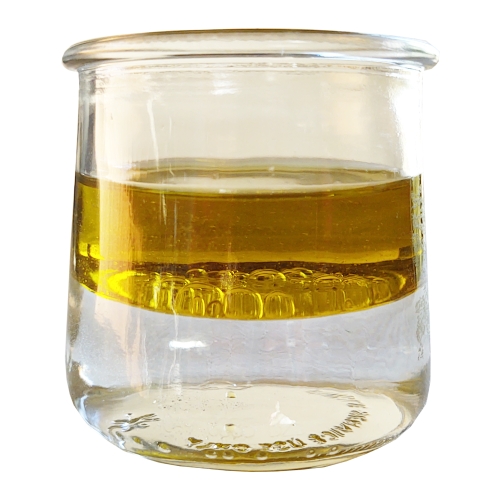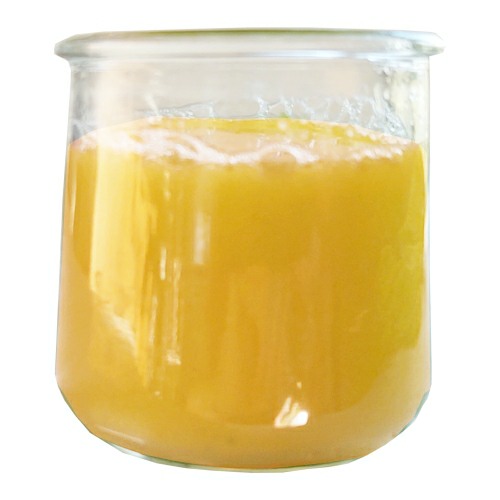Problems with Emulsions
An emulsion is a stabilized mixture (dispersion) of two or more immiscible liquids, like oil and water. Under certain circumstances, oil and water can be mixed to a homogenous and stable solution, called emulsion. Everyday examples of emulsions are butter, milk, and mayonnaise which all consist of oil and water. There are two conditions necessary to create emulsions:
- Emulsifier: An emulsifier is a special substance that is able to bind water molecules and oil molecules at the same time thereby mixing oils and water to a homogenous solution.
- Mechanical Force: By vigorous stirring the oil and water phase are broken up into fragments and small droplets forming a mixture held together by the emulsifier.

Oil and water phase are separated without an emulsifier and without stirring.

Oil and water are a homogeneous solution after adding an emulsifier and stirring.
When Emulsions Become Unstable
Although emulsifiers help stabilize a mixture of oil and water, emulsions are still inherently unstable and eventually will separate. The speed at which this occurs depends on the composition of the emulsion, and the type and concentration of the emulsifiers.
- Creaming or Sedimentation: This is a process in which the less dense oil droplets rise to the top and a fatty cream appears (example: unhomogenized milk). Creaming can have various causes but is reversible: Oil phase is too large compared to water phase or vice versa (adjust ratios accordingly), droplet size of dispersed phase is too low (use homogenizer to reduce droplet size), or the viscosity of continuous phase is too low (add a thickener to the continuous phase).
- Flocculation: This is a process where the internal phase droplets stick to each other forming small clumps (flocci). Flocculation can be reversed by agitation, increasing the concentration of the emulsifier or adding a higher HLB emulsifier.
- Coalescence or Separation: In this process the internal phase droplets merge to ever larger droplets until the oil and water phase are completely separated. Since coalescence is irreversible you'd have to make the emulsion again. The most common causes of coalescence are:
- Insufficient amount of emulsifier
- Precipitation of water-soluble emulsifiers
- pH disbalance (too high a concentration of base or acid can make emulsifiers disfunctional)
- Emulsifier interaction (use of anionic and cationic emulsifiers in the same product)
- Wrong type of emulsifier (use of low-HLB emulsifier for water-in-oil emulsions and use of high-HLB emulsifier for oil-in-water emulsions)